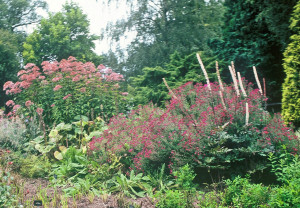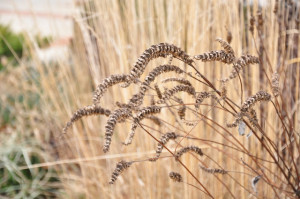The subject of sustainability and sustainable landscapes has been on my mind for the past few weeks as I have worked on a three hour presentation that I will be co-teaching with another landscape designer in Columbus next week.
We need to first establish the definition of sustainability. I think the best one is provided by the Sustainable Sites Initiative: “Sustainable landscapes reduce water demand, filter and reduce storm water runoff, provide wildlife habitat, reduce energy consumption, improve air quality, improve human health, and increase outdoor recreation opportunities”. This may seem like a lot to ask for but if we are going to improve our environment, we need to start somewhere.
The next step is establishing the definition of sustainable landscapes. They reduce water usage, retain rainwater and storm water onsite at least for a while, build low maintenance into design, replace turf with native/nativar/ climate-appropriate plants, and provide food and shelter for insects and birds, particularly during the winter.
So, how can we reduce water usage? One way is reducing the amount of lawn, most of which is rarely used but is merely ornamental and the other, especially in partial shade, is replacing turf with grass-like plants like sedges that do not require frequent mowing or irrigation.
How can we retain storm water on site? A partial answer is the use of rain barrels that are connected to the house downspouts so that the water does not go into the sewers. Rain barrel water is probably best used for irrigation in nearby beds. Another method is connecting the downspouts to pipes that will actually take the water to a different part of the property where it can flow into the grass or into a swale.

Euphorbia ‘Bonfire’, Panicum ‘Heavy Metal’, Achillea, Agastache, Allium deadheads, Crocosmia foliage, existing Rhododendron – all except the are drought tolerant plants
Building low maintenance into design is all about plant selection. For hot, dry areas, which plants are drought tolerant? For shady, moist areas, which plants can tolerant wet feet? Might this be an area for a rain garden? Which perennials have self-cleaning flowers? Do you know the mature size of plants that you intend to buy? This knowledge could prevent many unnecessary hours of pruning.

Eupatorium purpureum, Aster ‘September Ruby’, Cimicifuga racemosa. These are all low maintenance perennials.
Can you give up some turf for a mixed border that is full of native or nativar plants that support wildlife?
Any of these steps will make your landscapes more sustainable.








0 Comments